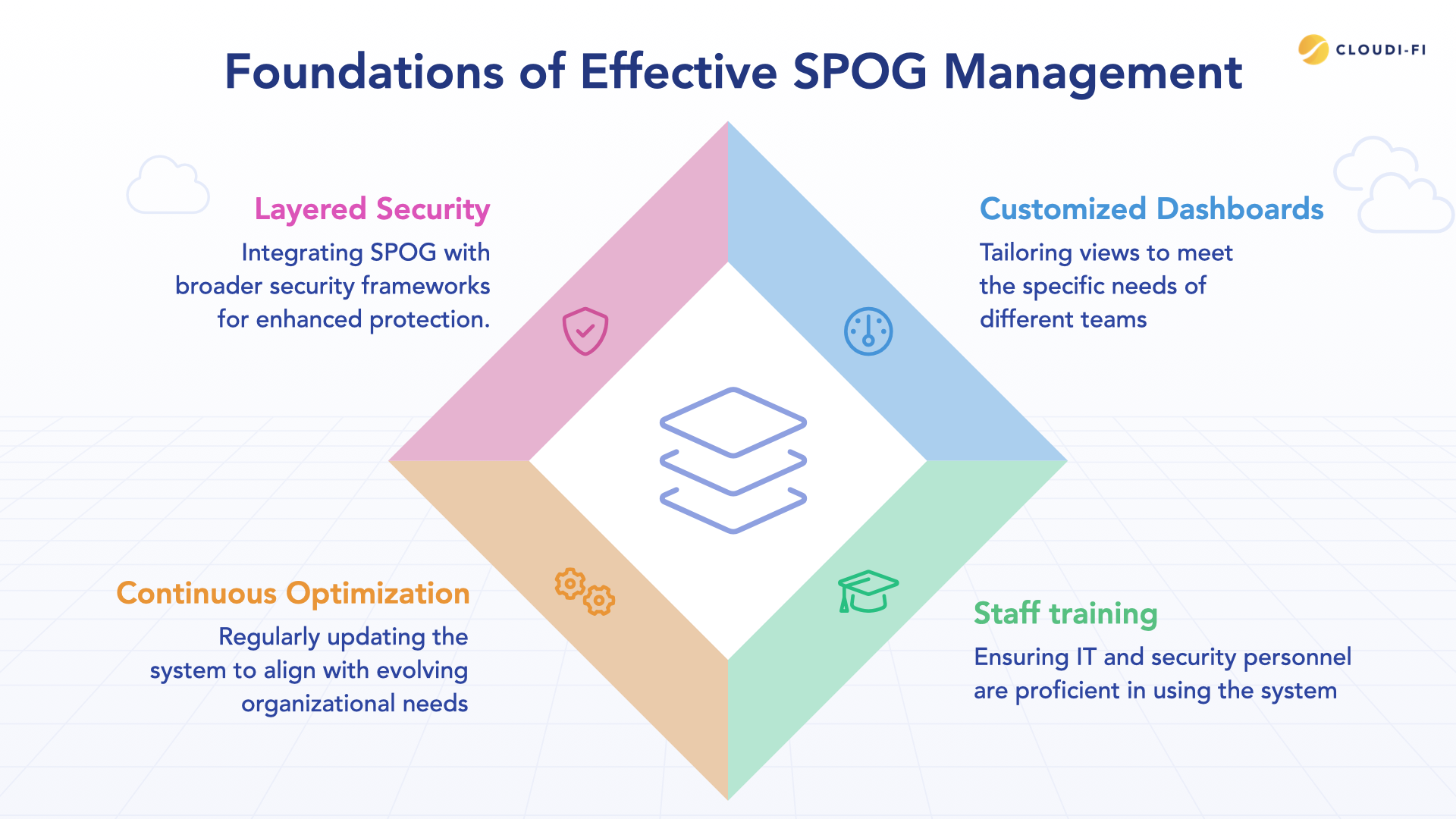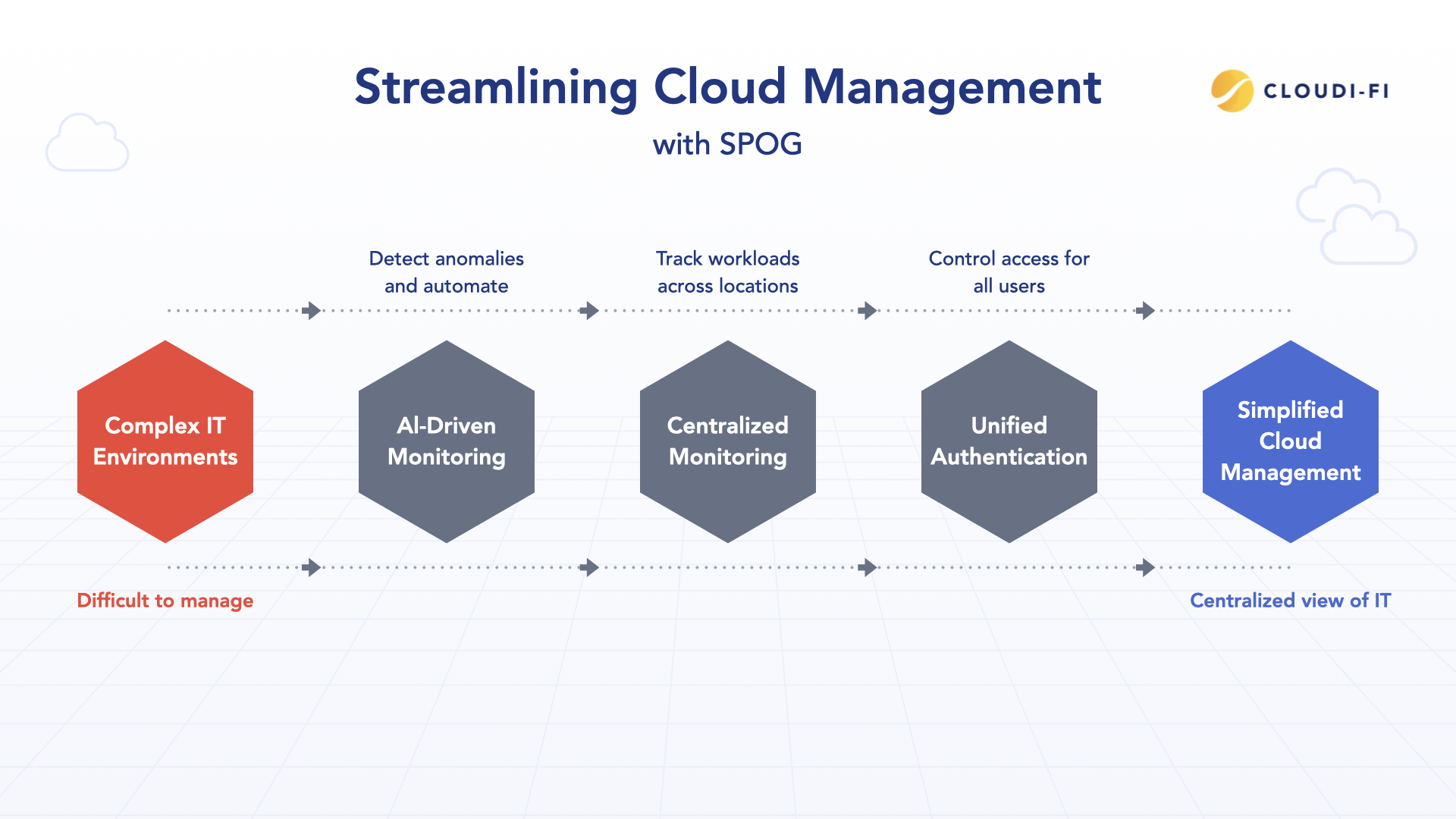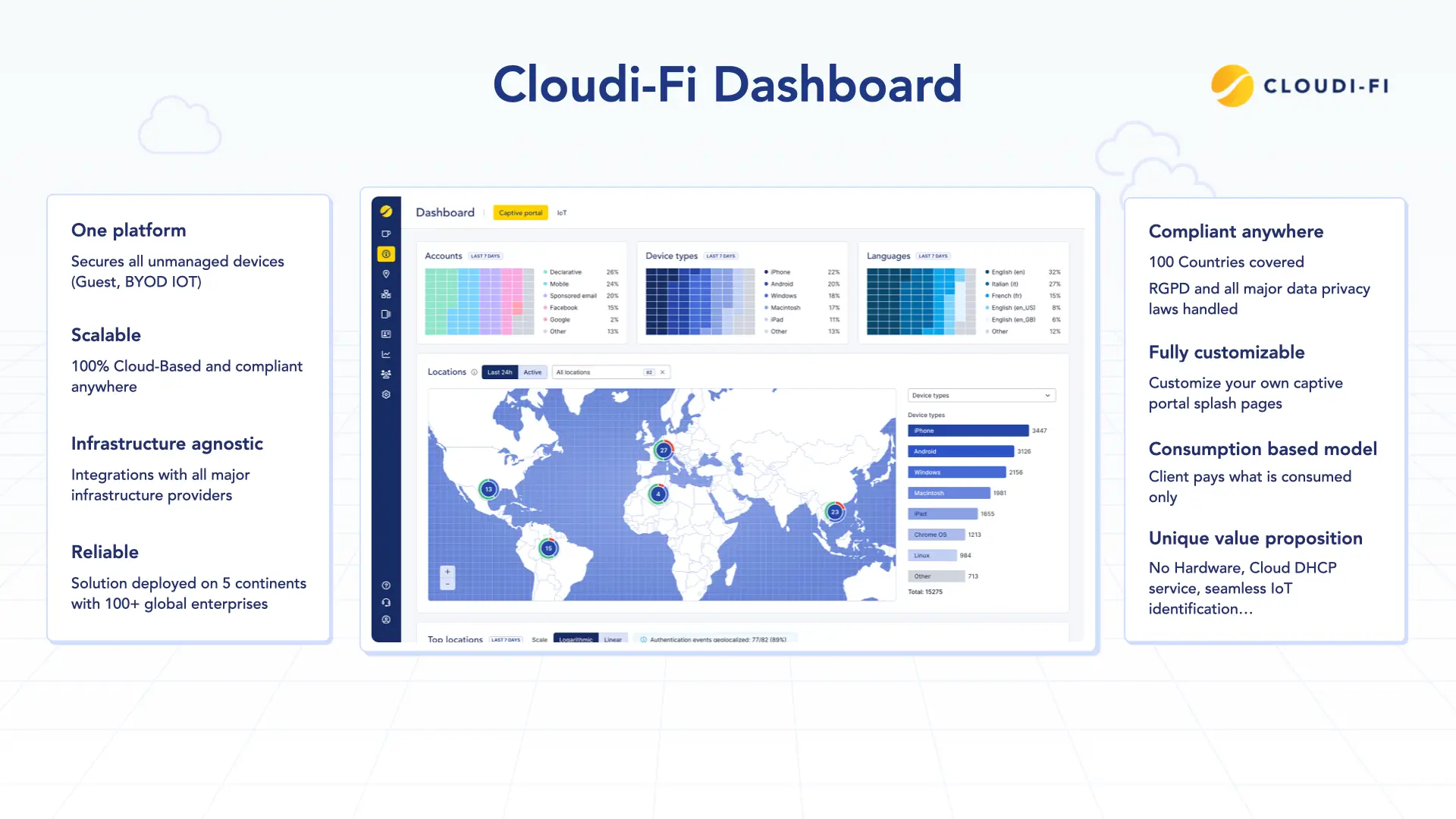Organizations globally are projected to spend $213 billion on cybersecurity in 2025, representing a 15% increase from 2024. With companies deploying an average of 75+ security tools to manage their network infrastructure, the complexity of cybersecurity management has reached critical levels. The network security tools market alone is expected to reach $50 billion in 2025, growing at a 12% CAGR through 2033.
This complexity creates significant operational challenges: security teams struggle with tool sprawl, fragmented visibility, and increased mean time to resolution (MTTR). A single pane of glass (SPOG) solution addresses these challenges by unifying multiple monitoring tools and data sources into one centralized interface, providing complete network visibility and enabling teams to monitor thousands of connected devices efficiently.
What is a single pane of glass?
The "single pane of glass" concept has changed by a lot over the last several years. Let's take a closer look at this approach and why it matters for modern network management.
Single Pane of Glass (SPOG) is a centralized dashboard that consolidates data from all your enterprise systems (networks, security tools, cloud services, and infrastructure) into one unified interface. Instead of juggling multiple monitoring tools, teams access all critical information in one place, enabling faster problem-solving and better decision-making.
Core concepts
SPOG combines several essential features: a unified interface that eliminates tool-switching, comprehensive data integration across multiple vendors and platforms, real-time insights into system performance and security, and enterprise scalability that grows with your organization.
Across industries, SPOG delivers immediate value. Teams respond faster to incidents, reduce manual troubleshooting, strengthen security monitoring, and ensure regulatory compliance. By consolidating fragmented tools into one interface, organizations lower operational costs, improve team collaboration, and shift focus from routine tasks to strategic initiatives.
Adopting SPOG transforms infrastructure management from reactive firefighting to proactive optimization. The investment yields measurable returns through faster incident resolution, improved security posture, reduced licensing complexity, and enhanced operational efficiency. For organizations managing complex, distributed IT environments, SPOG is a strategic capability that directly strengthens business agility and security resilience.
Critical importance for network security in 2025
The strategic value of unified cybersecurity dashboard solutions has never been more pronounced. Survey data indicates that 99% of cybersecurity professionals consider SPOG either very important (64%) or somewhat important (35%) to their organizations. However, 85% of enterprise IT leaders report that true unified observability remains elusive despite significant investments in monitoring tools.
Tool sprawl challenge: Organizations face unprecedented complexity with the average enterprise managing 75+ security tools simultaneously. This fragmentation creates operational inefficiencies, increases alert fatigue, and extends incident response times. Network security tools market growth of 12% annually through 2033 reflects the ongoing struggle to find unified solutions. (Source)
Regulatory and compliance pressures: Increasing regulatory requirements for cybersecurity transparency and reporting make centralized visibility essential. SPOG implementation enables organizations to demonstrate compliance across multiple frameworks from a single interface, reducing audit complexity and ensuring consistent security postures.
Zero Trust architecture support: As organizations adopt Zero Trust security models, SPOG network management serves as the control center for these architectures. Unified platforms enable "centralized view of IT Operations" while maintaining strict access controls across complex IT landscapes.
Building strategic network visibility foundations
Effective network visibility dashboard implementation requires understanding the distinction between data aggregation and true network comprehension. As cybersecurity pioneer Rob Joyce emphasized, "If you really want to protect your network, you really have to know your network". This principle remains fundamental to building proper visibility foundations in 2025.
Why abstraction ≠ understanding
Organizations often mistake basic data collection for comprehensive network understanding. Integrated security monitoring platforms must provide context alongside metrics, explaining not just what is happening but why events occur and what they predict for future security posture.
Recent studies show 86% of service engagements reveal troubling blind spots across operational technology networks. This problem stems from tools that focus on what happens instead of explaining why it happens or what could happen next.
Best practices for effective single pane of glass network management
A single pane of glass solution needs proper planning to work well. Organizations can improve their network management capabilities by doing this.
Customize dashboards for different teams
The most important advantage of a single pane of glass monitoring is its flexibility. Each team needs a unique view. A CTO's needs are different from what frontline technicians need daily. Your dashboards should show relevant KPIs and alert teams about activities that affect performance or signal potential threats. Teams will see what matters most to their role when you customize the view this way.
Train IT and security staff on usage
The best single pane of glass dashboard will fail without proper training. Staff won't use tools they don't understand, which defeats the purpose of having a SPOG. A complete training program shows how the system works and proper usage protocols. The implementation often needs a fundamental change in organizational culture because universal access to information might work differently than before.
Continuously review and optimize views
The IT world changes fast. You need to check your monitoring solution regularly. Make it a priority to update your system monthly or quarterly. This way your single pane of glass network management tools line up with your organization's changing needs.
Use SPOG as part of a layered security strategy
SPOG solutions should enhance broader security frameworks. Perfect integration might not be possible, but organizations can get close by focusing on core functions. Connect tools that give the greatest security value first while keeping specialized solutions for unique needs.

Future of single pane of glass cloud management
The digital world of single pane of glass cloud management continues to evolve faster as organizations adapt to increasingly complex IT environments.
Several key developments will shape how enterprises implement and use these unified monitoring solutions in the future.
Trends in AI-driven monitoring
AI integration stands out as the most transformative advancement in single pane of glass monitoring. Modern platforms now use advanced algorithms, machine learning, and natural language processing to detect anomalies, associate events, and highlight potential disruptions immediately. Organizations that implement AI-driven tools see dramatic improvements, and one study shows AI integration can reduce incident response times by up to 90%. These intelligent systems focus more on:
- Predictive analytics to anticipate issues before they occur
- Automated root cause analysis to troubleshoot faster
- Self-healing capabilities that trigger remediation actions automatically
- Business metrics integration with technical indicators
Role of SPOG in hybrid and multi-cloud environments
Organizations now use almost five different cloud platforms on average. This creates management challenges that single pane of glass cloud management solutions can uniquely address. SPOG platforms provide centralized monitoring across distributed infrastructure in these complex environments, which offers significant advantages for multi-cloud strategies.
SPOG solutions enable administrators to track workloads whatever their location, which helps organizations manage expansive cloud ecosystems efficiently.
How SPOG supports Zero Trust architectures
Zero Trust security models have become standard practice, and single pane of glass network management platforms now serve as control centers for these architectures. These platforms boost collaboration between security teams by providing "a centralized view of IT Operations" while maintaining consistent security policies across environments. SPOG solutions support Zero Trust implementation through unified authentication management that makes it "easy for administrators to manage and control access for all users behind a single pane of glass". Security teams can maintain watchfulness across complex IT landscapes while implementing strict access controls through this centralized approach.

Conclusion
Organizations deploy dozens of security tools across expanding technology stacks, which makes network management more complex. Teams just need unified visibility now more than ever. A single pane of glass solution offers a practical answer by bringing different data sources together. This helps teams watch thousands of connected devices quickly.
SPOG is more than another dashboard. It changes how organizations see their networks by providing a complete view with analytical insights. Security teams can see what happens across the network. They understand why issues occur and can predict problems before they affect operations.
A successful SPOG deployment needs strategic planning and constant fine-tuning. Teams should have custom dashboards that match their needs. Staff training and regular system checks play a vital role too. These solutions work best when used with other security measures instead of alone.
AI-driven monitoring will improve SPOG features without doubt. This will cut down incident response times and enable predictive analytics. Centralized monitoring platforms will become crucial as hybrid and multi-cloud setups become common. These platforms help maintain visibility across spread-out infrastructure.
Zero Trust security models also rely on the complete views that SPOG solutions provide.
Moving to simplified network management through SPOG needs dedication and careful setup. Organizations that guide this change well gain soaring wins. They streamline operations and improve their security stance. They become skilled at managing complex systems more efficiently. These advantages make SPOG more than just a tech convenience - it's a strategic must-have for modern network management.









